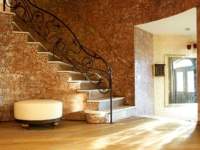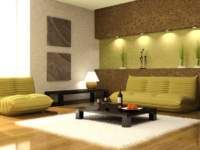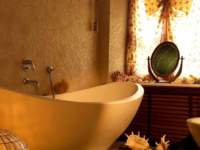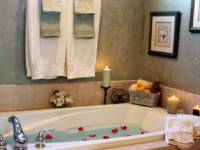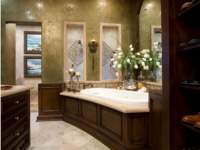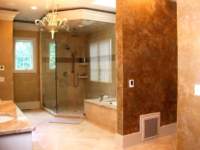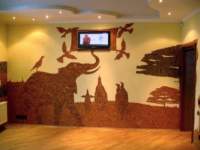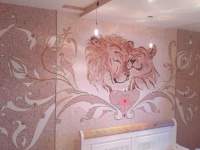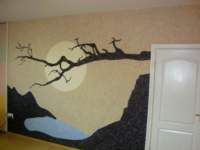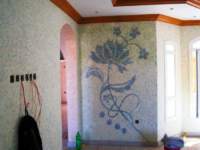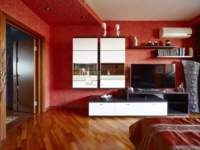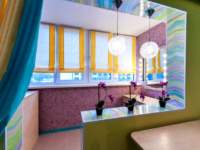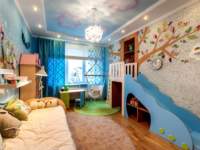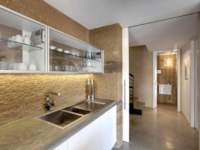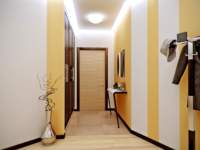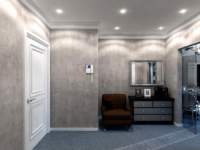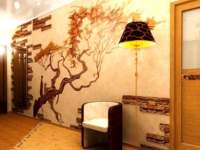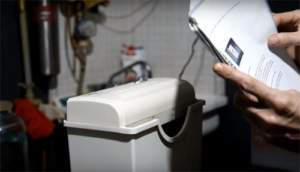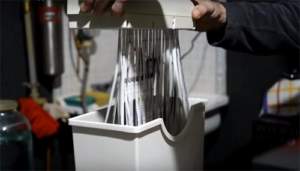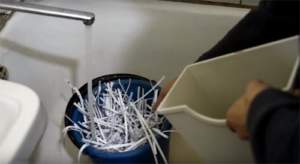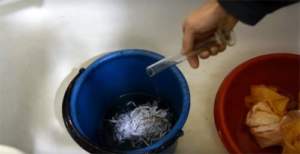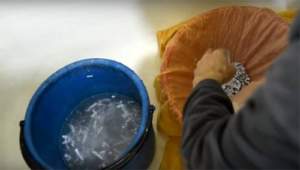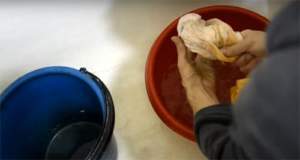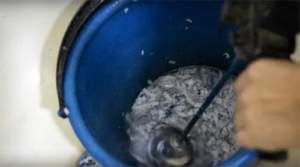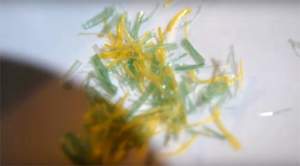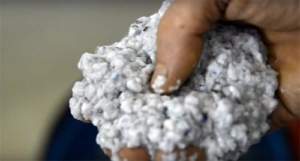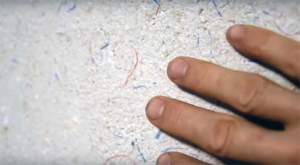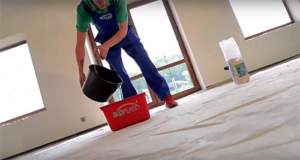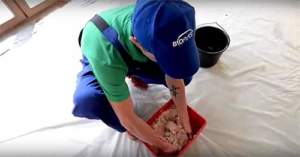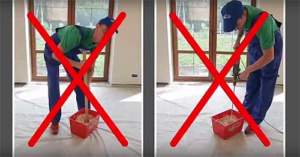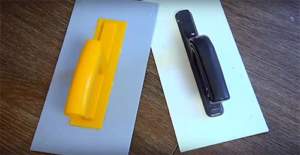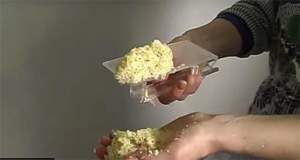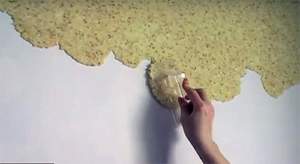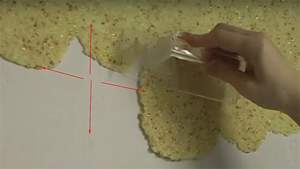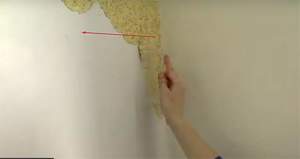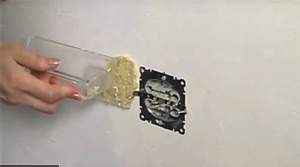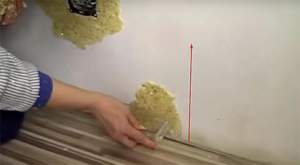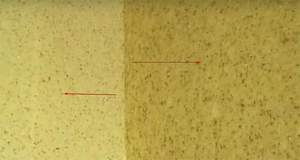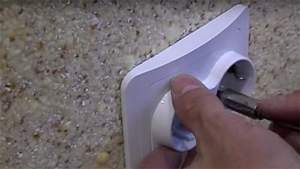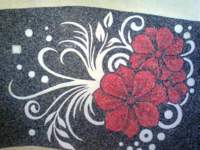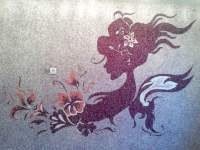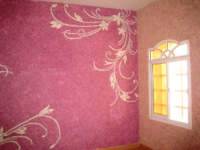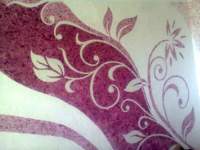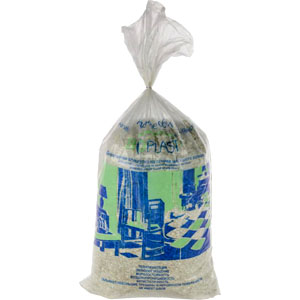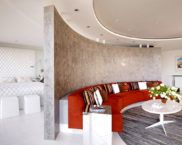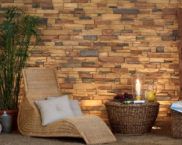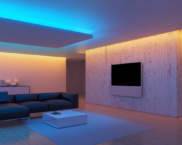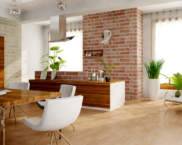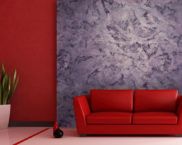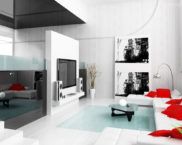Liquid wallpaper: real reviews, disadvantages, advantages and application features
By and large, this type of wall covering can hardly be called wallpaper. Liquid wallpaper is more like paper plaster. Moreover, they are applied in the same way. Today we will talk about all the features of this material. We will thoroughly discuss liquid wallpaper, reviews, disadvantages and advantages. After all, this is not an easy material to work with, but with its help you can achieve very impressive results.
The content of the article
- 1 What is liquid wallpaper and their varieties
- 2 Photo of liquid wallpaper in the interior and some features of their use
- 3 Liquid wallpaper: disadvantages, reviews without retouching
- 4 For homemade: how to make liquid wallpaper with your own hands
- 5 How to apply liquid wallpaper: video and photo master classes
- 6 5 ways to remove liquid wallpaper from the wall
- 7 How to decorate paper plaster
- 8 What colors are best for liquid wallpaper?
- 9 Inspirational Photos: Liquid Wallpaper Drawings on the Walls
- 10 Manufacturers and prices
- 11 Summing up
What is liquid wallpaper and their varieties
There is a version that liquid wallpaper was first invented in France and their appearance was historically associated with Charles VII. Allegedly, it was in the castle he captured for the first time that the walls were covered with a mixture of crushed silk and flour. The king was impressed by this original idea of the craftsmen and this technology was used in other palaces.
In fact, it would be correct to call the material paper plaster, not wallpaper, but it just so happened. So, liquid wallpaper - what is it? Ethen a crumbly dry multicomponent mixture, which is packed in bags by weight, and diluted with water or adhesive for application.
The liquid wallpaper contains the following components:
- Cotton or cellulose fibers. This component makes up 90 percent of the material.For the mixture, recycled raw materials can be used. Waste from textile and woodworking industries, waste paper are used.
- Decorative items. Their main task is to decorate and give a special relief to the coating. For this purpose, sequins, silk fibers, small beads, wood chips or threads and various dyes are used.
- Adhesive base. PVA, ordinary wallpaper glue or bustilate, paste can act as a binder. Natural formulations that are non-toxic and inexpensive are welcome.
- Additional additives. In order to prevent mold fungi and pathogenic bacteria from growing on the surface of the material, antiseptics are added to the paper plaster. If you plan to use the coating in rooms with high humidity, it is advisable to varnish it.
Note! There are mixtures on sale, diluted with water and ready to use. They are sold in buckets. These wallpapers cost a little more.

The color palette of the material is very rich. You can choose a monochromatic coating or variegated, combine different colors in patterns and relief coating
Table 1. Varieties of material
Photo of liquid wallpaper in the interior and some features of their use
The main thing in interior design is harmonious a color scheme and materials. This rule also applies to liquid wallpaper.Do not combine this material with traditional wallpaper, paper, non-woven or vinyl.
Examples of the use of cellulose coating in the interior:
Advice! The best decoration for a wall with paper plaster is paintings or art panels. Fresh flowers also look good against this background.

Using paper plaster, you can easily zone the room. For this purpose, material of different colors or even textures is used.
No risk: using liquid wallpaper for the bathroom
There is a traditional opinion that the bathroom and toilet should be decorated ceramic tiles and nothing else. It must be admitted that ceramics can now satisfy the most demanding taste. You can choose not only the original color, but also use the decoration with ornaments or panels on a ceramic basis.
Liquid wallpaper can be called a bold and extraordinary solution for bathroom decoration... This room is characterized by a humid atmosphere and temperature changes. For this reason, you should approach the choice of wall and floor coverings with great care. Ordinary wallpaper will not work in this case. They won't last even a couple of months, provided you have used high quality glue. But liquid wallpaper is another matter. It turns out they are great for specific bathroom conditions.
See how liquid wallpaper looks in toilets, a photo gallery of Internet options:
According to reviews, liquid wallpaper in bathrooms does an excellent job with dampness, temperature changes and poor ventilation of the room. In addition, this material successfully resists the development of fungus.

A material with special characteristics is used to decorate the bathroom. It costs more than regular cellulose formulation
Advice! Before you start decorating the toilet room, determine the places on the walls where water from shells and bathroom. It is better to use ceramics here, combining it with the main decoration of the walls with cellulose plaster.
For additional protection, the decorative wall covering should be treated with acrylic varnish.But do not get carried away with the process: 1-2 layers are enough. If you overdo it, the wallpaper will be difficult to replace in damaged areas and may crack.Before choosing such a coating, study the photo of the interior. Liquid wallpaper requires a special approach. If you have the skills to apply this composition, you can safely experiment with drawings and ornaments.
Pay attention to the photo of liquid wallpaper in the apartment, from which real masterpieces are created:
This material has many advantages that should be mentioned.
Table 2. Advantages of liquid wallpaper
| Advantage | Description |
|---|---|
| Ease of use | The dry mixture is diluted with water in a ratio of 1x6 and applied to the wall with an ordinary spatula. |
| Big choice | The range of materials is very wide. A rich palette of colors and textures allows you to use it in almost any interior. |
| Use on any surface | Paper plaster can be applied to ceilings and walls with no seams or seams on the surface. |
| Correction of uneven walls | Small defects in the walls can be leveled with a paper mixture. It is important that the base is painted white. |
| Breathable surface | The structure of this coating does not prevent oxygen from reaching the wall surface. |
| Freedom of creativity | The material allows you to "play" with texture, volume and color. Skillful use of liquid wallpaper will make your interior unique. |
Check out how liquid wallpaper looks in the original interior:
For those who are against the use of liquid wallpaper in the kitchen: interior photos
Modern kitchen Is not just a place to prepare food. It's not a shame to receive guests in a beautiful kitchen. Lunch with loved ones here will be filled with special comfort and sincere atmosphere.The kitchen, like the bathroom, is a room with special operating conditions. There is not only high humidity and high temperatures, but also steam and soot.
You can often find negative reviews about liquid wallpaper in the kitchen... Skeptics argue that any plaster, cellulosic or conventional, is difficult to clean. They are right, but only partially. Materials created using modern technological methods can be adapted to specific operating conditions. Some helpful tips on how to use liquid wallpaper for the kitchen:
- paper plaster should not be used in the work area. Space above sink and it is better to decorate the stove with ceramic tiles;
- so that the coating does not absorb odors and is easy to clean, it should be covered with acrylic varnish;
- if necessary, you can update part of the coating by soaking the wallpaper with plain water;
- for cosmetic repairs, you should stock up on wallpaper from the same batch as the base coat.
By following these guidelines, you will achieve excellent results. See what the kitchen interior looks like with this coating:
Advice! If you plan to decorate the kitchen interior with wallpaper, be sure to install a hood above the stove. It will keep the wall covering in its original form for a long time.
Related article:
Wallpaper for the kitchen washable: photo catalog- the ideas considered in our review will allow you to choose the best options without errors from all the variety on the modern market.
Liquid wallpaper for a small space in the corridor
Paper plaster fits organically into the interior of a narrow hallway space... With its help, you can even out the errors of the walls, and the exquisite texture will give the interior a special zest.
Considering that, as a rule, there are no windows in the hallway, light colors should be chosen for decoration. Do not use liquid wallpaper with overly bright colors. If there are low ceilings in the corridor, you can make a smooth transition of two shades: a light tone at the top, darker at the bottom.
In the hallway, you can even create three-dimensional drawings using cellulose plaster. But everything should be in moderation. Too "fancy" drawing on the wall will look heavy in a small space.
Designer's recommendations for combining liquid wallpaper with other materials:
- use inserts of ordinary wallpaper on a non-woven or vinyl backing;
- combine liquid wallpaper with cork, bamboo linen or wood panels;
- combine paper plaster with inserts from ordinary plasterobserving harmonious color transitions.
Photo of using liquid wallpaper in the corridor:
Related article:
Wallpaper for the corridor and hallway: photo the best options can be found in our review, as well as familiarize yourself with the main criteria for choosing paintings.
Liquid wallpaper: disadvantages, reviews without retouching
Before planning a renovation, read reviews about liquid wallpaper. This will help you take off your rose-colored glasses and really look not only at the features of the material, but also at your own capabilities. We have selected for you several truthful reviews of who made liquid wallpaper with their own hands and appreciated them in practice (the authors' spelling is preserved):
Scirly: Before applying, I reviewed the video again. Everything is so simple and understandable, I thought now I will do everything quickly and that's it. But it was not there…. It did not work as easily and simply as in the video, the scraper turned out to be not convenient. The wallpaper lay with bald patches, unevenly, it was necessary to level it with hands, especially the corners. It turned out to be unrealistic for me to glue the corners with a scraper. How to achieve a layer thickness of 1-1.5 mm remained a mystery to me. It seems to me that this is impossible in principle ...More details on Irecommend:http://irecommend.ru/content/dolgo-i-slozhno
Pay attention to the reviews about the pros and cons of liquid wallpaper. Often their benefits are easily disputed by practitioners. Here's an example of such a review:
KosmonautMisha: First of all, I would like to immediately dissuade you from buying and applying this coating on the walls. Trust me, it’s better to glue the usual wallpaper, it’s better to paint the walls in the end, so as not to smear this fluffy nonsense. Why such wallpaper is convenient? No preparation of the walls is required. Generally it is required, but everyone says otherwise. In fact, if your walls are crooked, then you can align them with liquid wallpaper. Only, firstly, the consumption of material will increase (and the wallpaper is not the cheapest, as it were, the prices for the dumbest start at 500 rubles, and the limit ... decorative silk plaster, variety, costs up to 2,000 rubles, and maybe more) ...More details on Irecommend:http://irecommend.ru/content/snimayu-lapshu-s-ushei-besplatno
Paper plaster is used not only for wall covering. Some apply this finish to ceilings. If the room is located on the top floor of a building, this technique is justified. Additional processing of the ceiling will keep the room warm. But not everyone thinks it's a good idea to apply liquid wallpaper to ceilings. Photos and reviews sometimes indicate extremely unsuccessful experiments. And, by the way, inviting outside specialists does not guarantee a successful result. Here is one such story:
Felina: In the corridor, a woman plasterer applied the wallpaper until it dried, it looked beautiful - even and bright, only the layer turned out to be twice as thick and it took her much less time. But when it all dried up, it was just awful! It turned out that she did not mix the glue well, and there were "bald" areas where it was lumps. In addition, the walls turned out to be somewhat "heterogeneous", apparently, she applied wallpaper in different directions. She also failed to make normal corners, although the walls were leveled before and the corners were perfect ...More details on Irecommend: http://irecommend.ru/content/ne-vse-tak-prosto-kak-pishut-v-reklame-foto-vozmozhnykh-kosyakov
For homemade: how to make liquid wallpaper with your own hands
Some handicraftsmen actually do this kind of coating with their own hands. How to make liquid wallpaper at home? It would seem that the task is not difficult. Cut the paper or fabric with scissors, add glue and glitter - and you're done. You can find many instructions on how to make your own liquid wallpaper. Manufacturing proportions and original ideas are not difficult to find on numerous sites.
But, do not rush to take up the scissors. Imagine that to process one square meter of a wall you need 300 grams of dry mix, but for the whole wall? Even if it occupies a modest 12 squares, you will have to cut at least three and a half kilograms of paper.Take a stack of newspapers of this weight and imagine the amount of work. Note that each particle should be only a few millimeters in size. If you don't have a dedicated automatic cutting tool, you will have scissor blisters. And another argument against: you cannot use magazines and newspapers for cutting. Newspapers will stain the walls with black ink marks, and glossy magazine papers will not absorb glue and moisture. You will have to buy special paper that is soft and loose enough. Do you feel like covering your walls with toilet paper? Unlikely. Then it doesn't fit.
If, nevertheless, you are not dissuaded, let's talk in more detail about how to make liquid wallpaper with your own hands. Our master class is dedicated to the manufacture of paper and other materials at hand.
Table 3. Making liquid wallpaper with your own hands
Consumption of liquid wallpaper per 1 sq. m. - the nuances of calculations, application and storage of material
Why is it important to make calculations in advance? If you buy too little mixture, it will run out at the most inopportune moment, too much - waste your money. Considering the cost of the material, extra spending will be sensitive to the family budget. So it's better to spend an extra hour on calculations to be sure of the result.
For the calculation, you will need to measure the area of the walls and subtract the area of the window and door openings from the result. If you forget how to do this, find any fifth grader.
Advice! Consider stock during material settlement. It will be useful for subsequent repairs. And also keep in mind that if you have little experience in plastering, the expense will be swept away more.

You can read about the consumption of one package of liquid wallpaper in the instructions for the mixture. The manufacturer usually places the label on the box or bag
Table 4. What can affect the consumption of the mixture
| Factor | Description |
|---|---|
| Mixing quality | If the composition is not mixed well, clots may form and the consumption of the mixture will increase. |
| Dilution rate | The more water, the thinner the coating, in addition, it adheres worse. This factor should be taken into account. |
| Storage duration | The diluted mixture cannot be stored for a long time. It loses its elasticity and fits worse. |
| Base quality | The consumption of liquid wallpaper per 1 square meter largely depends on the degree of surface preparation. If the walls are uneven and cracked, more mix will be needed to level the surface. |
On average, one kilogram package is enough for 4 squares. If there is a spraying machine, then 6 square meters. If you do not have the professional skills of a plasterer, one package per 3 meters will take.
Advice! A simple technique will help to reduce material consumption: before applying wallpaper, paint the wall in the same tone as the future coating. This way you can avoid “bald spots” and significantly reduce the consumption of the mixture.
How long does liquid wallpaper dry? It all depends on the thickness of the layer. With professional application, a day is enough for the mixture to dry completely. If you had to level the walls and fill in cracks, apply a thick layer - it can take several days.
Important! Do not store the diluted mixture for more than three days. After this period, it will lose its normal color and elasticity.
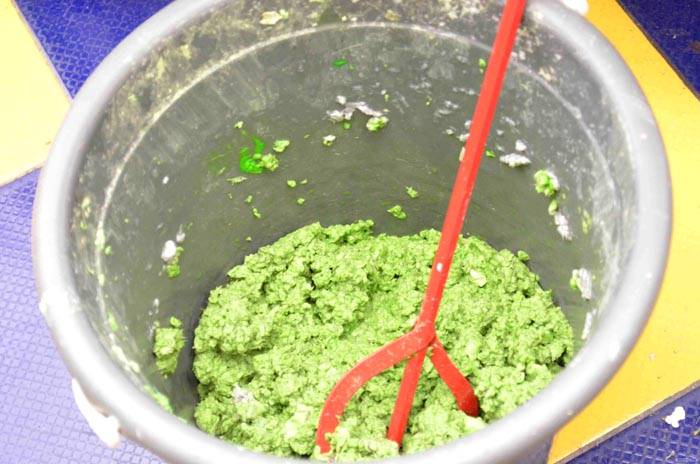
If it is a pity to throw away the diluted wallpaper - dry it on plastic wrap, break it into pieces and store in an airtight container
How to apply liquid wallpaper: video and photo master classes
The technology of applying liquid wallpaper involves a manual or mechanical method.How to glue liquid wallpaper? Manual application is done with a conventional plastering trowel. Some people use a roller for this purpose - it applies the mixture in a thinner layer. If you use an embossed roller, you get a textured surface.
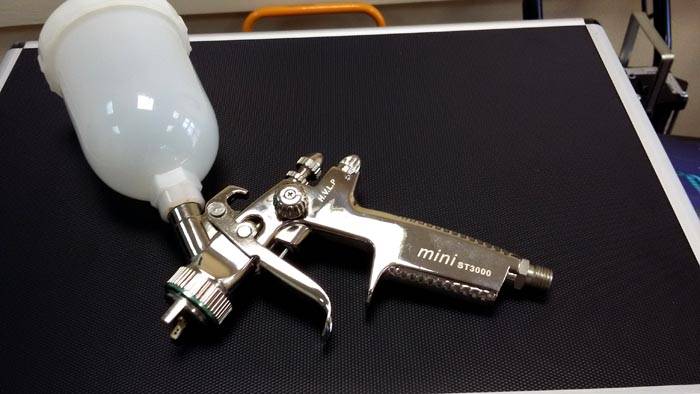
You can mechanize the process with a spray gun. To use it, you need to stir the composition very thoroughly
We have selected for you several master classes with photos and videos of applying liquid wallpaper with your own hands. But before showing how to properly apply liquid wallpaper, you should talk about surface preparation.
How to prepare the walls
Preparation of walls for liquid wallpaper begins even before purchasing the material. Defective spots should level with putty... Make sure the walls are free of cracks or potholes.
Advice! Examine the surface and remove all nails, screws and bolts. The resulting holes must be covered and leveled.
The next stage is a primer for liquid wallpaper. It is best to use an acrylic blend. It does not have a pungent odor and penetrates deep into the plaster. Using an acrylic liquid wallpaper primer can save you a lot of material. The only drawback of acrylic is that it is not applied at temperatures below five degrees Celsius. But, in principle, it is not recommended to apply liquid wallpaper in a cold room.
Another compound for priming is quartz. It is applied at any temperature.
If the walls in the room are covered drywall, they should be completely plastered. If you align only the joints of the sheets, you will get an uneven surface and this defect will appear when applying the topcoat.
How to apply liquid wallpaper to the wall: video and photo recommendations
To apply liquid wallpaper to the walls, you will need a trowel or roller. If you have no experience in this kind of work, start with the section of the wall that will be least noticeable - behind the closet or near the floor. After the first square meter, you will understand the principle of action.
Table 5. Liquid wallpaper, how to apply it on the wall
A little about applying material to the ceiling
Liquid wallpaper for the ceiling is an original solution in the interior. Most often, this coating is used if the ceilings have defects. Such a covering will help keep warm in the room located on the top floor.
But such a processing of the ceiling makes special demands. Cellulose plaster is much easier to apply to the wall. Any flaws will be very noticeable under bright light. chandeliers.
How is liquid wallpaper applied to the ceiling? One of the highlights is thorough surface preparation. The ceiling is repeatedly covered with a primer, dust is removed. If this is not done, lumps of the mixture will fall on your head already in the process.The composition is applied in small portions, carefully rubbing over the surface. Moreover, it should be applied in a sketch, with a sharp movement from the bottom up.
This work will require a compressor with a capacity of 400 liters per minute. The tip of the tube should be about 1 centimeter so that cellulose particles will not get stuck during application.
We have selected for you instructions in the video on how to glue liquid wallpaper on the ceiling:
5 ways to remove liquid wallpaper from the wall
Liquid wallpaper should not be left on the walls if you plan to change the finish. No matter how firmly they hold, do not risk it. First, they are not suitable as a basis for other materials. Hidden behind a layer of plaster or a sheet of new wallpaper, cellulose will become a breeding ground for mold and bacteria. And secondly, paper plaster does not form a perfectly flat surface, all irregularities will be revealed on a new coating.
Before you start cleaning the walls, turn off the electricity in the room and protect the outlets and switches with tape. The fact is that you have a "wet" job, and current and dampness are a dangerous neighborhood.To remove the coating, you will need warm water, a sponge, and comfortable scrapers. For the best effect, you can add a couple of tablespoons of dish soap or fabric softener to the water.
Moisten the walls liberally with a damp sponge and wait about 10-15 minutes. After spatula or scraper, remove the composition from the surface of the walls. This process is not fast. Pieces of dry mixture will remain in places, they will have to be soaked several times. A fur roller can be used instead of a sponge.

The steam generator will greatly simplify the task. Wallpaper softens under its influence in just a couple of minutes
Note! Wallpaper removed from the walls can be reused after drying and grinding.
In addition to the usual soaking and using the steam generator, you can use an industrial hair dryer, grinder or a drill with a brush attachment. But all these methods require significant physical effort. Think about whether you are ready for such a load.
How to remove liquid wallpaper from the wall, video recommendations:
How to decorate paper plaster
Sequins
Modern wallpapers have a textured surface and different patterns. Glitter wallpapers look especially attractive. Reflective particles make the interior light and radiant, especially in natural light. Glitter for liquid wallpaper will help bring attention to a specific area, such as a far wall or ceiling.
Stencils
Stencils will help create unusual patterns on the walls. With their help, even a novice master can make a real picture. Multicolor compositions look especially original. To apply a mixture of different colors, you will need to make several templates. Via stencils volumetric compositions are also created for liquid wallpaper. To do this, a mixture is applied to the main coating through a template in several layers, achieving the creation of a three-dimensional figure.
Related article:
DIY stencils for decor: templates and techniques for their production. From the article you will learn what stencils are, what they are for, the pros and cons, examples of decorating furniture and mirrors, and also find templates for download.
Varnish and paint
Using varnish for liquid wallpaper is a common technique. It allows you to protect the coating from moisture and make it more resistant to mechanical damage. In addition, the varnish will help the coating retain its original color for a long time.Acrylic varnish is added directly to the mixture or applied over it after drying.

It is worth considering that adding varnish will significantly complicate the process of removing wallpaper from the wall in the future.
Advice! If liquid wallpaper is applied in a thin layer, varnish can make it transparent, and this is not always good. To prevent this from happening, after application, the wallpaper is first covered with a transparent primer, and only then with varnish.
Can liquid wallpaper be painted? Can! But keep in mind that too thick a layer of water-based or acrylic paint can lead to peeling of the material from the walls. Therefore, primer the paper plaster before painting.
We have already talked about whether it is possible to glue wallpaper on liquid wallpaper. It is possible, but not necessary. But if for some reason the situation is hopeless, for example, a beloved mother-in-law comes, and her rider has walls with green wallpaper under a birch tree, try it. Pre-inspect the old coating for peeling, treat it with a primer and glue after complete drying. Everything about everything will take a couple of days, and you still have time to hang Yesenin's portrait and put the cat to sleep before the guest arrives.
What colors are best for liquid wallpaper?
The choice of colors of liquid wallpaper and textured fillers is very large, but it often happens that you need a specific shade that is difficult to find. The situation is not hopeless. You can add dye while mixing and get the desired result. And in this case, the simplest, even home-made white liquid wallpaper will acquire the required color.
Colors can be organic or synthetic. The first, without a doubt, are more environmentally friendly and have natural shades. But synthetics hardly fade.
To work, you need a water-soluble dye. Make no mistake, the color for nitro enamels is not suitable for paper plaster.
Note! Do not rack your brains when choosing a color manufacturer. Domestic formulations are in no way inferior in quality to imported ones.
For mixing with wallpaper, dissolve the color in water and add gradually, checking the color intensity. Please note that after drying, the mixture will lighten a couple of tones.
Important! Do not dilute the colored mixture for too long. After 3-4 hours, it can change its shade.
The most difficult task is to achieve the same color for all batches.If you are a beginner and cannot apply paper plaster quickly and on all walls at once, do not knead all packages at once. It is better to take one and accurately measure the proportions to repeat the procedure exactly on the next package.
Inspirational Photos: Liquid Wallpaper Drawings on the Walls
If the usual uniform coating seems too boring for you, pay attention to design techniques. One of these is decorating the walls with your own hands with drawings. Liquid wallpaper makes it possible to create multi-color compositions with complex relief.
Here are some tips for making wall art:
- think over the image carefully, make a stencil or draw outlines on the wall with a marker;
- when applying the mixture to the markings, protrude 1 millimeter beyond the edges;
- apply wallpaper to the borders with a small rubber spatula; it is better to use a contour border to create clear lines;
- each element must be completely dry before you proceed to the next piece.
Use beads, beads, large glitters, and other fillers to accentuate and decorate your design.
Note! Professionals can apply liquid wallpaper in such a way that the surface will imitate stone or brickwork, leather.
It will seem to some that it is easier not to create a drawing in stages, but to apply it using the application method. Before starting this work, keep in mind that the bottom layer of the coating can get wet and bubble. First you need to cover the surface with a primer and varnish.
Photos of drawings from liquid wallpaper on the walls in the interior:
Manufacturers and prices
The price per square meter of liquid wallpaper ranges from 400-800 rubles. This does not include work. The master will charge you 300-400 rubles for your work. The price for a pack of liquid wallpaper depends on the manufacturer. The most expensive are the materials of French and German firms.
Let's see how much liquid wallpaper of the most famous brands costs according to Yandex.market data:
Table 6. Manufacturers and prices
As you can see, the cost of liquid wallpaper is relatively low and is comparable to the cost of conventional vinyl and non-woven wallpaper.You can buy liquid wallpaper inexpensively in online stores, but keep in mind that packages from different parties can be sent to you, and this will be noticeable on the wall. So it is better to choose this material personally, comparing the batch number and visually identifying the differences.
Related article:
Wallpaper for walls: photo catalog interesting solutions for the living room, bedroom, children's room, kitchen and corridor. The basic rules for the selection of canvases and the recommendations of designers - read our review.
Summing up
We examined in detail the advantages and disadvantages of liquid wallpaper. Reviews about this finishing material are very different, you should not dwell only on negative points. You can make liquid wallpaper yourself or purchase a ready-made mixture.They can be applied to surfaces with defects and, if necessary, partially replaced during repairs. Paper plaster provides an excellent opportunity to experiment with patterns and colors, you will make the interior of your home original and unique.
Do not forget to share your invaluable experience and photos!









